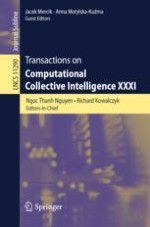2018 | OriginalPaper | Buchkapitel
Comparing Game-Theoretic and Maximum Likelihood Approaches for Network Partitioning
verfasst von : Vladimir V. Mazalov
Erschienen in: Transactions on Computational Collective Intelligence XXXI
Verlag: Springer Berlin Heidelberg
Aktivieren Sie unsere intelligente Suche, um passende Fachinhalte oder Patente zu finden.
Wählen Sie Textabschnitte aus um mit Künstlicher Intelligenz passenden Patente zu finden. powered by
Markieren Sie Textabschnitte, um KI-gestützt weitere passende Inhalte zu finden. powered by
